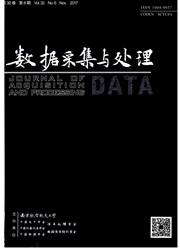

 中文摘要:
中文摘要:
在普通话大词汇量连续语音识别中,使用最大后验概率决策规则解码得到的是具有最小句子错误率的识别结果,但是本文通常使用字错误率作为识别结果的评测标准。为了使识别结果具有最小字错误率,在充分考虑汉语语言特点的基础上,提出了一种汉字混淆网络算法。这种算法能够有效地将普通话大词汇量连续语音识别系统输出的词格转换成为汉字混淆网络。详细讨论了最小贝叶斯风险决策规则理论及使用汉字混淆网络进行的解码过程。基于2005 HTRDP(863)评测数据集进行的实验结果表明,这种使用汉语字混淆网络的方法有效地降低了普通话大词汇量连续语音识别结果的字错误率。
 英文摘要:
英文摘要:
To obtain recognition results with minimum word error rate in mandarin large vocabulary continuous speech recognition, a Chinese character confusion network algorithm is presented on the characteristics of Chinese language. The algorithm can transform word lattices output from mandarin large vocabulary continuous speech recognizer into Chinese character confusion network. And the minimum Bayes risk decision theory and the decoding are discussed based on Chinese character confusion network. Experimental results based on 2005 HTRDP (863) evaluation corpus show that the proposed algorithm yields a lower word error rat(WER) than the MAP recognition and word confusion network decoding.
 同期刊论文项目
同期刊论文项目
 同项目期刊论文
同项目期刊论文
 期刊信息
期刊信息
